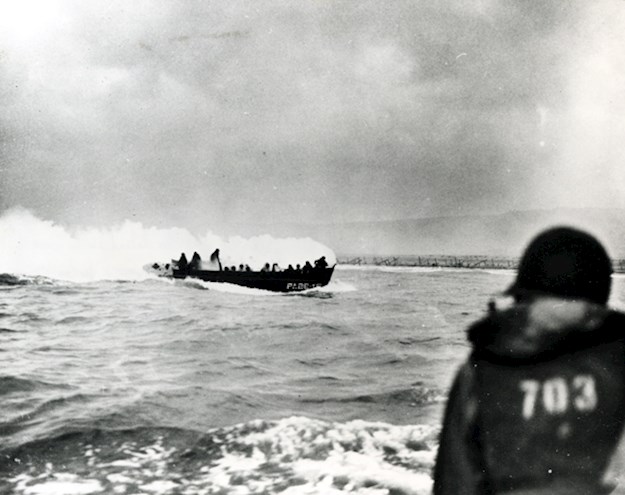The longest Day
6 June 1944 entered history under the now legendary name of D-Day, the Allied landings on the beaches of Normandy. It was the most dramatic part of Operation Overlord, that marked the beginning of the liberation of German-occupied Western Europe.
Four years after the crushing defeat of France, Belgium and the Netherlands in the spring of 1940, the Anglo-American Allies launched Operation Overlord. The aim was to gain a foothold in Western Europe in order to defeat Nazi Germany, along with the Soviet Army on the Eastern front.
Normandy was chosen because of its close proximity to the British coast, thus allowing Allied aircraft to effectively support troops landing during the initial phase of the assault (Operation Neptune).
Above all, the German defences along this stretch of the coastline were less formidable than in the north. The German Command expected the Allies to land where the Channel was at its narrowest. A fleet of over 6.900 vessels was required to land the assault forces of more than 156.000 men on five beaches, that received code names (from west to east) Utah and Omaha (U.S.), Gold (British), Juno (Canadian) and Sword (British). About 24.000 airborne troops were also deployed in order to take control of strategic points and to prevent German attacks on the flanks of the assault forces ashore.
Despite poor weather conditions and fierce resistance from German units the operations were successful. On the evening of 6 June 1944, the Allies had gained a foothold on all five beaches. The German defenders were uncertain how to respond.
D-Day was mostly an Anglo-American effort: British, American and Canadian troops made up most of the numbers, but no less than 17 Allied countries participated on the ground, the sea and in the air. The landings of 6 June 1944 entered history under the now legendary name of D-Day.




